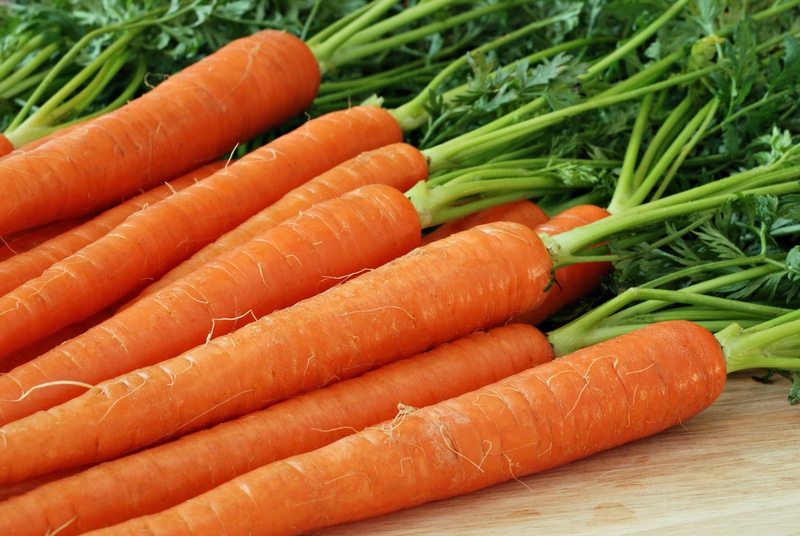
Carrots are one of the most nutritious vegetables out there. The carrots have a combination of earthy, woody, and sweet flavor tones, which makes them a perfect addition to salads, soups, casseroles, and other cooking recipes.
Mold On Carrots
The carrots have a crispy and crunchy texture, which actually helps increase their shelf life. However, if the carrots have already developed mold, we are sharing what you can do about it!
What To Do With Moldy Carrots?
The mold grows on carrots and is filamentous. In addition, the mold can produce spores and the filaments start penetrating deeper into the carrots. The mold also produced mycotoxins, which can cause harm to your health when ingested.
It’s commonly believed that mold develops at warm temperatures but it has the capacity to grow within a refrigerator as well. For this reason, it’s important to clean the refrigerator with water and baking soda regularly to prevent mold growth and the spreading of mold spores.
As far as carrots, you can consume them if they have mold but make sure you cut out the moldy parts. In particular, you have to cut one inch around and below the moldy areas. That’s because the carrots have a low moisture content, which makes it challenging for mold to penetrate deeper.
For this reason, cutting out the moldy parts will help save the vegetable. In addition to carrots, you can also use the same method for cabbage, bell peppers, and potatoes.
The Shelf Life Of Carrots
The carrots can last over six months if you use a cool root cellar. However, if you cannot invest in a root cellar, you can submerge them in water and store them in the refrigerator – this method will keep the carrots fresh for around three weeks but you should regularly check the carrots.
Keep in mind that carrots can moisten whenever there is moisture loss. So, as long as carrots aren’t slimy, you can consume them. On the other hand, if the carrots are just soft, you can mash them and add them to stews, soups, broth, and/or pesto.
In case you want to fix the soft carrots, it’s recommended that you submerge the softened carrots in an ice bath as it helps make the carrots crisp.
The Correct Way Of Storing The Carrots
Now that we have mentioned what it means to have mold on carrots, you can follow some storage tips to prevent softening of carrots and mold development.
- Cut The Tops
If you have purchased carrots from the farmer’s market or have grown your own in the kitchen garden, it’s likely that the leafy part is attached to the carrots. To store the carrots and extend their lifespan, you should cut out the tops and leave approximately an inch of stem on the top.
If you don’t remove the top, it will keep extracting moisture from the carrot, which results in drying out of the vegetable.
- Store Them Dry
Secondly, you should avoid rinsing the carrots before storing them in the refrigerator. If you rinse the carrots, the moisture will accelerate mold development. So, only wash the carrots when you have to use them, and use a crisper drawer if you have to store in the refrigerator.
- Use Root Cellar
One of the best ways of storing the carrots for months is to use the root cellar. For this purpose, you must pack the carrots in a sealed container with moist sand or sawdust. However, you shouldn’t remove the tops or leaves if you’ve to use a root cellar.
- Using The Refrigerator
In case you cannot get your hands on a root cellar, you can use a refrigerator to store the carrots. For this purpose, you have to fill the pitcher or another container with water and put the carrots vertically in them. Then, put the container in the refrigerator.
This method will keep the carrots fresh for three to four weeks but make sure you change the water after five to six days or whenever the water becomes cloudy.
- Freezing
Last but not least, you can freeze the carrots to store them for months. It’s recommended that you wash and scrub the carrots to remove dirt, dry them, and make the slices. Then, just put these carrot slices in a freezer bag and let the carrots freeze.